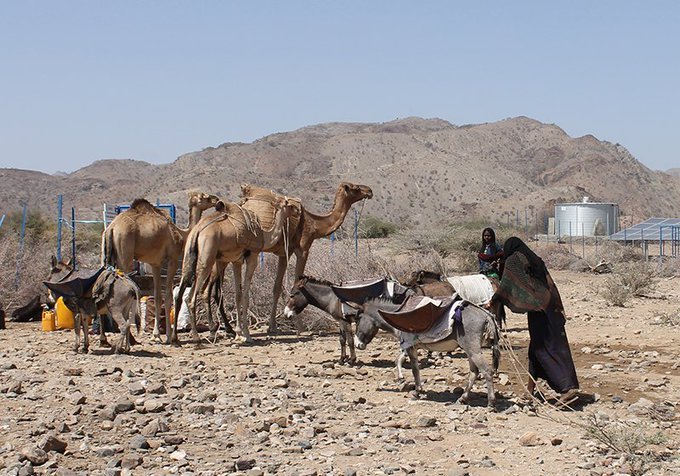Kenya is grappling with a mounting water crisis that has worsened as the effects of global warming intensify. In a country where access to clean and safe water has always been a challenge, the increasing scarcity of this vital resource is threatening to unravel decades of development progress, affecting millions of lives in the process.
Kenya’s water resources are primarily dependent on rainfall, which has become increasingly erratic due to climate change. The situation is particularly dire in arid and semi-arid lands (ASALs) that make up about 80% of the country’s land area.
In regions like Turkana, Mandera, and Wajir, prolonged droughts have led to the drying up of rivers, lakes, and water pans, which are crucial for the survival of both human and livestock populations. The shrinking of water sources has a domino effect on various aspects of life.
For one, it exacerbates food insecurity as water scarcity directly impacts agriculture—the backbone of Kenya’s economy. Small-scale farmers, who rely on rain-fed agriculture, are particularly vulnerable. The lack of water for irrigation means crop failures are becoming more common, leading to food shortages and soaring prices.
This water crisis has also led to heightened tensions among communities, sometimes culminating in violent conflicts. In regions where water sources cross communal boundaries, disputes over access have become increasingly frequent. These conflicts are often between pastoralist groups competing for dwindling water resources for their livestock, and they threaten to destabilize entire regions if not adequately addressed.
Urban areas are not immune to the water crisis either. Nairobi, Mombasa, and other major cities are experiencing water shortages that disrupt daily life and economic activities. In Nairobi, residents of informal settlements like Kibera and Mathare are hardest hit, often relying on water vendors who charge exorbitant prices. The inequity in access to water in urban areas is stark, and it highlights the broader issue of inequality in Kenya.
The Kenyan government, through various initiatives, has recognized the urgent need to address the water crisis. The Ministry of Water, Sanitation, and Irrigation is spearheading efforts to improve water access, including the construction of dams and the promotion of water harvesting techniques.
The National Water Master Plan 2030 is a key policy document aimed at ensuring sustainable management of the country’s water resources. However, these efforts have been hampered by a combination of inadequate funding, corruption, and poor implementation. The ongoing scandal surrounding the construction of the Arror and Kimwarer dams, which has led to allegations of misappropriation of funds, underscores the challenges the government faces in effectively managing water projects.
The delays and controversies surrounding such projects only serve to worsen the water crisis, leaving millions without reliable access to this essential resource.
Non-governmental organizations (NGOs) and community-based organizations are playing a crucial role in mitigating the effects of the water crisis. Organizations like Water.org, the Kenya Water and Sanitation Civil Society Network (KEWASNET), and the Kenya Red Cross are working on the ground to provide immediate relief to affected communities.
These organizations are involved in drilling boreholes, promoting water conservation practices, and advocating for better water governance. In addition to these efforts, there is a growing recognition of the need for a more sustainable approach to water management in Kenya.
This includes investing in climate-resilient infrastructure, such as desalination plants and wastewater treatment facilities, which can help diversify the country’s water sources. The private sector also has a role to play, particularly in developing innovative solutions for water conservation and management.
Addressing the water crisis in Kenya requires a multifaceted approach that involves all stakeholders, from the government and NGOs to the private sector and local communities. It also requires a commitment to transparency and accountability to ensure that resources allocated for water projects are used effectively and benefit those most in need.
As global warming continues to affect Kenya’s climate, the struggle for water will only intensify. The actions taken now will determine whether Kenya can overcome this crisis or whether it will continue to be a source of suffering for millions. The time to act is now, before the water crisis becomes an irreversible catastrophe.


